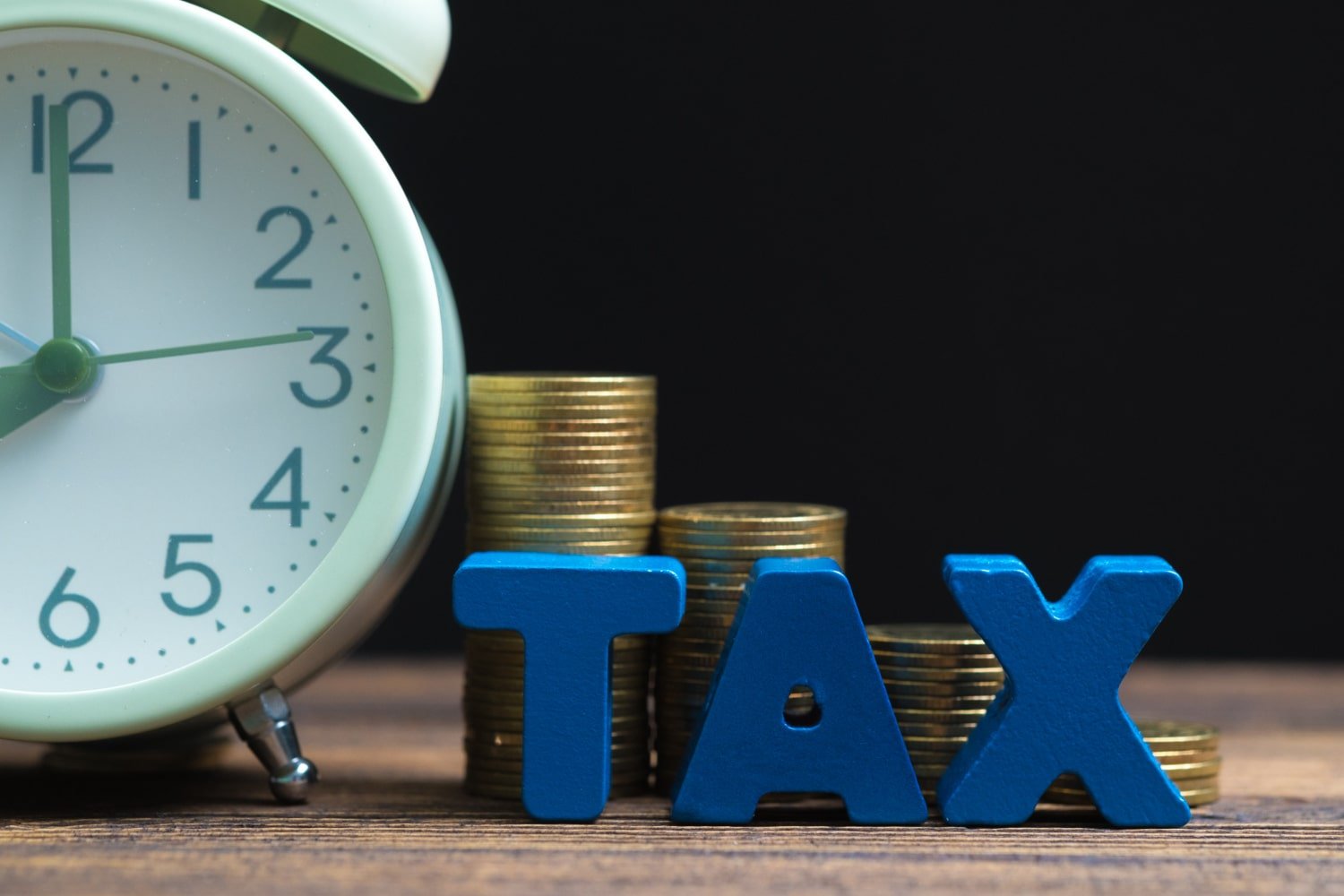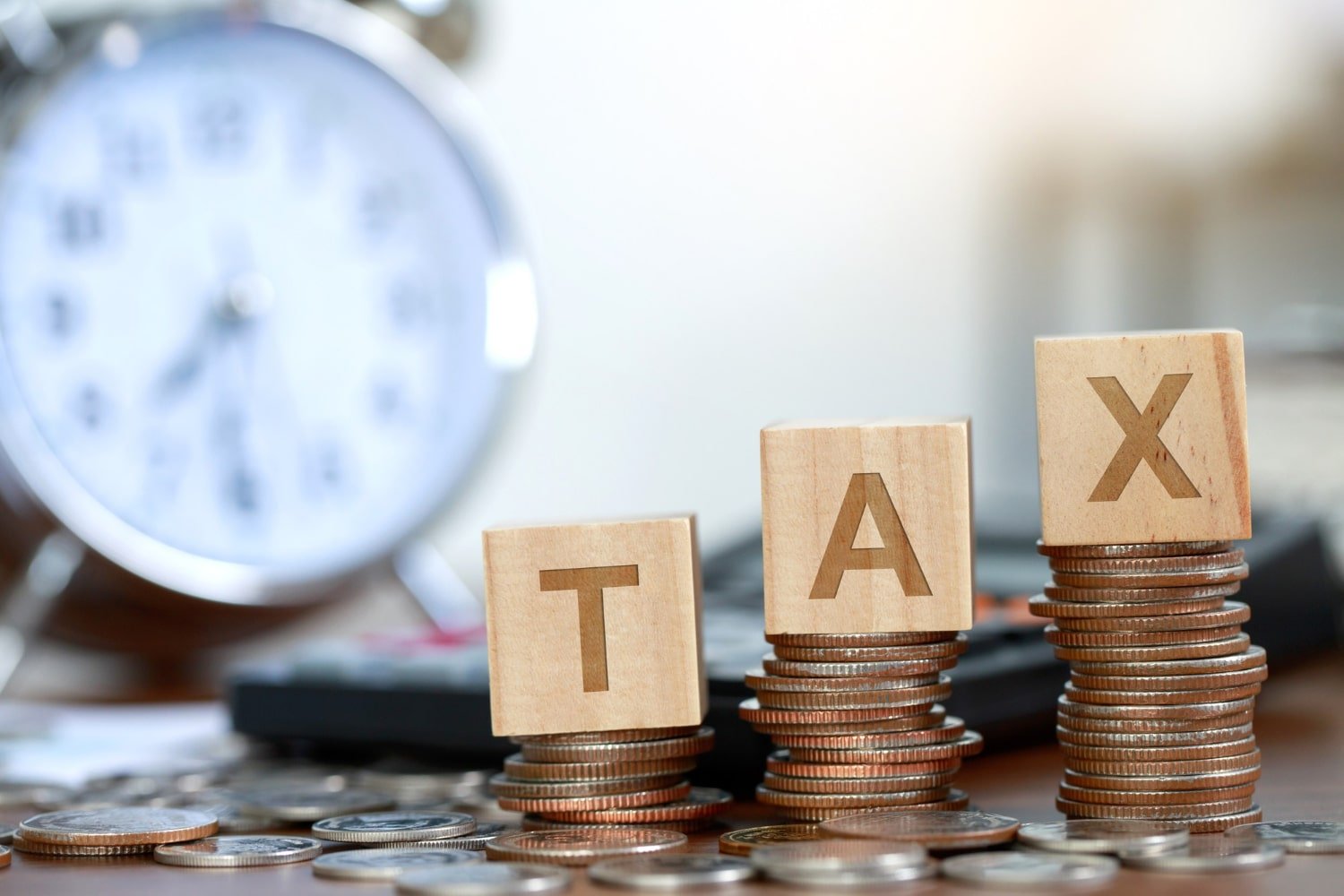HMRC launched the One to Many (OTM) Letter Campaign to identify and collect taxes on undeclared income from UK individuals. The campaign has now targeted UK landlords who are earning income from short-term property letting.
This guide is designed for UK landlords who have either received an OTM letter from HMRC or generate income from short-term property letting. If you’re a UK landlord, you can gain a comprehensive understanding of your tax obligations and the available reliefs and allowances that will help you to comply with UK tax laws.
You can also learn how to respond to an OTM letter from HMRC and how to use the Digital Disclosure Service to disclose any undeclared income.
Short-term Property Letting
Short-term property letting involves renting out a property for a short period of time from a few days to weeks on end. Various platforms like Airbnb, Booking.com, HomeAway, TripAdvisor etc. enable property owners to list their properties, establish prices, and communicate with potential guests.
These platforms provide an opportunity for property owners to earn extra income through short-term letting.
It is crucial to note that income generated from short-term property letting is taxable and must be reported on an individual’s personal tax return along with other income.
Sample One to Many (OTM) Letter from HMRC to Landlords with Income from Short-term Property Letting
If you are a landlord of short-term property letting and have not yet disclosed your rental income to HMRC, you may receive a letter similar to the one shown below.


Before discussing HMRC’s One to Many (OTM) Letter Campaign regarding short-term property letting income, it is important to understand the tax obligations and available tax reliefs and allowances for landlords in the UK.
Understanding Your Tax Obligations
Staying tax compliant can be a challenging task, but it is crucial to stay up to date with your tax obligations. It is essential to understand the different types of taxes that may apply to you and ensure that you pay them.
The following are the main types of taxes that you should be aware of as a landlord of short-term property letting in the UK:
Income Tax
Income from short-term property letting is considered as regular rental income, which means that you are obligated to pay taxes on it to HM Revenue and Customs (HMRC) in accordance with the prevailing tax rates and allowances.
You can work out the taxable rental profits from short-term property letting by deducting allowable expenses (agent fees, property insurance, gas etc) from the gross rental receipts.
It’s important to note that since the 2017/18 tax year, there is a significant restriction on the deduction of mortgage interest as an allowable expense, unless you meet the criteria for Furnished Holiday Lettings, as explained below.
Therefore, from the year 2020/21, mortgage interest cannot be deducted as an allowable expense, instead you are given tax credit at 20% of the mortgage interest.
Check our guide on “Interest Relief Restrictions” to learn more.
However, you may be eligible for certain tax reliefs, which can help to reduce the amount of tax you owe on your short-term property letting income.
Capital Gains Tax (CGT)
Capital Gains Tax (CGT) also applies to short-term property letting, such as short-term vacation rentals or Airbnb properties.
If you sell a property that has been used for short-term letting, you may be liable to pay CGT on any gains made from the sale.
The calculation of Capital Gains Tax is based on the difference between the sale price and the purchase price of a property, considering any allowable expenses.
The tax rate for CGT on short-term property letting is the same as for any other type of asset, and it will depend on whether you’re a basic or higher-rate taxpayer
Value Added Tax (VAT)
Value Added Tax (VAT) may be applicable to short-term property letting. In the UK, VAT applies to businesses that have a taxable turnover of over £85,000 per year.
If the short-term property letting business meets this threshold, then they must register for VAT, charge VAT at 20% on the rental income and file regular VAT returns to HMRC.
Indeed, this is one of the important distinctions between normal letting and short-term property letting as residential rental income from normal letting is exempt from VAT but short-term property lettings are classified as business.
To learn more about VAT, check out our article on VAT on Property.
Stamp Duty Land Tax (SDLT)
Stamp Duty Land Tax (SDLT) is a tax payable when a property is bought or transferred.
If a property is purchased with the intention of using it as a short-term property letting, SDLT may be payable at a higher rate.
The additional SDLT surcharge applies to properties purchased for more than £240,000 and is payable on top of the standard SDLT rates.
Understanding Your Tax Reliefs and Allowances
It is equally important to be aware of the various tax reliefs and allowances that are available to you as a landlord of short-term property letting. By understanding your tax reliefs and allowances, you can ensure that you are not overpaying on your taxes and can make the most of the opportunities available to you.
Here are some of the most common tax reliefs and allowances that may be relevant to you as a landlord of short-term property letting in the UK:
Income Tax Reliefs and Allowances
The following are some of the tax reliefs and allowances that can reduce your income tax on income from short-term property letting:
Rent a Room Scheme
The ‘Rent a Room Scheme’ is a UK government initiative that allows landlords to rent out room within their main residence and get a tax-free allowance of £7,500 per year.
If you’re a landlord and let your main residence for short-term letting, then you will qualify for Rent a Room Scheme.
- The accommodation must be within your main residence i.e., the property where you live.
- The property must be fully furnished.
- The letting is not for business use (e.g., for office).
It’s important to note that :
-
- the £7,500 allowance applies per property and not per tenant. Therefore, if you’re a landlord who takes in two tenants, then the £7,500 allowance can only be deducted once.
-
- if the property is jointly owned, half the rent-a-room limit is given to each joint owner i.e., the £7,500 allowance is reduced to £3,750.
-
- the £7,500 allowance is an allowance on gross rental receipts i.e., total receipts before deducting any expenses. Therefore, if your gross rental receipts are below £7,500 in a tax year, you don’t need to declare your income in your tax return, and the tax exemption is automatically applied.
What if my gross rental receipts exceed £7,500?
There are two options available if your gross rental receipts exceed £7,500:
Option 1: Calculate rental profits in the standard way i.e., deduct all allowable expenses from the gross rental receipts.
Option 2: Calculate rental profits by claiming Rent a Room tax-free allowance of £7,500. If you select this option, you deduct £7,500 from gross rental receipts and you are not allowed to deduct any expenses.
Property Allowance
The property allowance is a tax relief that allows landlords to earn up to £1,000 tax-free from their rental income.
If you’re a landlord with gross rental receipts not exceeding £1,000 per year, the income is not charged to tax.
Its important to note that :
-
- You must elect to apply property allowance on or before the first anniversary of 31 January following the tax year
-
- You cannot claim deduction for your expenses if you claim the property allowance
-
- If the property is jointly owned, the share of gross rental receipts of each joint owner is considered.
For example,
If a couple generates £1,200 of gross rental receipts from short-term property letting per annum, they will each have gross rental receipts of £600. As this does not exceed £1,000, they can claim property allowance and therefore, the income for each of them will not be subject to tax.
Did You Know ?
You can either claim ‘Rent a Room Allowance’ or ‘Property Allowance’, it is not possible to claim both.
Furnished Holiday Lettings (FHL)
Furnished Holiday Lettings (FHL) are subject to different rules than regular rental properties and must meet certain criteria to qualify for the tax advantages.
Conditions for Furnished Holiday Letting
The following conditions must be met to treat a property as a Furnished Holiday Letting (FHL). The property must be:
-
- Furnished
-
- Situated in the UK or a state in the European Economic Area (EEA)
-
- Available for commercial letting as holiday accommodation to the public for at least 210 days in the relevant 12-month period (usually the tax year)
-
- Let out for 105 days or more as holiday accommodation out of 210 days – the ‘letting’ condition.
If a property is let for a continuous period of more than 31 days to the same tenant, it is not considered holiday accommodation for the purposes of the letting condition.
This means that properties that are typically let on a long-term basis do not qualify as Furnished Holiday Lettings (FHLs) and are not eligible for the associated tax advantages.
Furnished Holiday Letting-Tax Advantages
If you are a landlord with Furnished Holiday Lettings (FHL), you can benefit from certain tax advantages:
1. Non-Applicability of Interest Relief Restriction
The section 24, Interest Relief Restriction is not applicable for furnished holiday lettings. If you’ve taken out a loan to purchase the property (which qualifies as furnished holiday let), the full amount of interest paid can be deducted from the gross rental receipts as an allowance expense.
2. Capital Gains Reliefs
Furnished Holiday Lettings (FHL) qualify for certain capital gains reliefs which normal lettings do not:
-
- Investors’ Relief
If you let properties that qualify as Furnished Holiday Lettings, you may take advantage of Investors’ Relief.
This means that when the FHL property is sold, the capital gains tax rate is only 10%, instead of the higher standard rate of 28% that applies to residential landlords in the higher tax bracket. By claiming this relief, you can save a significant amount of money, as you will pay 18% less in taxes on the capital gains arising from the sale of your FHL property.
-
- Rollover Relief
You may be able to claim Rollover Relief on your FHL property which allows you to defer paying capital gains tax on the sale of your FHL property if the proceeds are used to purchase another property. Therefore, you don’t pay any tax now!
-
- Gift Relief
Gift Relief, also known as Holdover Relief, may also be claimed on your FHL property if you give away the property for no consideration or sell it for less than the market value. By doing so, you can defer paying Capital Gains Tax (CGT) and the person receiving the property will be liable to pay CGT when they eventually sell it.
Nevertheless, there are various conditions to be met to qualify for the above-mentioned capital gains tax reliefs.
It is important to seek advice from a property tax expert for tax planning purposes well in advance of any property sale. We can help you ensure that all eligibility requirements are met, and that the transaction is structured in a tax-efficient manner.
3. Treatment as ‘Earned Income’
Any rental profits from Furnished Holiday Lettings are treated as ‘Earned Income’ which is similar as any other self-employed income.
Therefore, you will be able to make a bigger tax-free contribution to the pension scheme as the amount a taxpayer can pay into their pension depends on the level of their earnings. This is an advantage as profits on normal letting activities are not regarded as earnings for pension purposes.
4. Capital Allowances
Capital allowances may be available for Furnished Holiday Lettings (FHL) in the UK. Capital allowances are a form of tax relief that allows the deduction of the cost of certain assets, such as furniture, fixtures, and equipment, from their taxable profits.
The value of the capital allowances claimed can be deducted from the taxable profits, thereby reducing the tax liability.
Explore more on Furnished Holiday Let (FHL): What You Need to Know About the Tax Advantages.
HMRC’s One to Many (OTM) Letter Campaign
HMRC has launched a One to Many (OTM) Letter Campaign aimed at landlords of short-term property letting who may not have declared their rental income for tax purposes. The campaign targets those who rent out properties through online platforms such as Airbnb, Booking.com, and HomeAway.
Certificate of Tax Position
OTM letter sent by HMRC regarding short-term property letting includes a “Certificate of Tax Position” form, which you are required to fill out and send back within 30 days, regardless of whether you have any additional tax liabilities to disclose.
This form serves the purpose of enabling HMRC to reduce the number of cases where they receive no response from taxpayers. The certificate comprises three statements, and you are required to select the one accurate statement, tick the corresponding box, and provide additional information as requested.

If you have income to disclose:
Tick box for Statement 1 if you need to disclose income from short-term property letting. Then, disclose the income through HMRC’s Digital Disclosure Service.
If you don’t have income to disclose:
Tick box for Statement 2 or 3 if you don’t need to disclose income from short-term property letting.
HMRC’ Digital Disclosure Service (DDS)
HMRC’s Digital Disclosure Service (DDS) is an online service that allows you to disclose any undeclared income or gains to HMRC. It is designed to provide a straightforward and confidential way for taxpayers to make a disclosure, calculate the tax owed, and pay any outstanding tax liabilities.
However, using the service does not guarantee immunity from penalties. The level of penalty charged will depend on various factors, including the nature and seriousness of the non-compliance, the level of co-ordination with HMRC, and whether the disclosure was prompted or unprompted.
DDS Application Information
About You:
-
- Name, Address and Date of Birth
-
- Email Address
-
- Telephone Number
-
- Unique Taxpayer Reference Number
-
- National Insurance Number
-
- Primary Occupation
-
- VAT Registration Number
Property Information:
-
- No. of Properties that you own
-
- Address of the Properties
-
- Purchase Price and Date of Acquisition
-
- Ownership
-
- Owner name, Address & Telephone number
-
- Reasons why rental income was not declared to HMRC
After you have notified HMRC of your intent to disclose your income from short-term property letting, you will be sent a notification acknowledgement letter.
Note: You can make the disclosure of your rental income as soon as you receive your unique Disclosure Reference Number (DRN), however, it must be done within 90 days of receiving the notification acknowledgement.
Digital Disclosure Process
To disclose your income from short-term property letting through HMRC’s Digital Disclosure Service, you must gather various pieces of information related to your rental income and expenses.
The process of preparing a disclosure involves the following steps:
01
Calculate the Tax Owed
To calculate the tax owed for undeclared income from short-term property letting, determine the total rental income that was not reported to HMRC, excluding previously reported income. Deduct allowable expenses to calculate taxable profit and determine the applicable Income Tax rates. The tax rates depend on the income earned above the Personal Allowance, which is the tax-free income received annually
02
Make a Formal Disclosure
After calculating the tax owed, you must make a formal offer to HMRC by completing the disclosure form and providing details of previously undeclared income from short-term property letting. Once accepted by HMRC, this offer creates a legally binding agreement between you and HMRC.
03
Payment
You must pay the tax owed to HMRC within 90 days of receiving the notification acknowledgement letter unless you’ve contacted HMRC to request an extension on the payment deadline. Use the Payment Reference Number (PRN) provided by HMRC when submitting your disclosure to make the payment.
Penalties
While determining the penalty, HMRC considers the behaviour that led to the understatement, whether you voluntarily came forward, and the quality of your disclosure.
The penalties are calculated as a percentage of the potential lost revenue, which is the additional tax owed by the landlord after accounting for the undisclosed rental income.
Reduction in Penalties
The penalty for undeclared income from short-term property letting can be reduced based on the quality of disclosure. The reduction applies to the difference between the maximum and minimum penalty rates within the applicable range.
The extent of the reduction depends on your cooperation with HMRC, including the accuracy of your responses (telling), assistance with their assessment (helping), and granting access to necessary records and documents (giving access to records).
30%
Telling
40%
Helping
30%
Giving Access to Records
Types of Penalties
The penalty for undeclared income from short-term property letting can take two forms:
Penalties for Failure to Notify
If an individual fails to notify HMRC of their tax liability within the appropriate deadline, they may face a penalty for failure to notify. This could happen to someone who only had employment income subject to PAYE tax and didn’t previously file a self-assessment tax return. In this case, penalties for failure to notify is levied.
Type of Behaviour | Unprompted Disclosure | Prompted Disclosure |
|---|---|---|
Non-deliberate-within 12 months of tax being due | 0% to 30% | 10% to 30% |
Non-deliberate-12 months or more after tax was due | 10% to 30% | 20% to 30% |
Deliberate | 20% to 70% | 35% to 70% |
Deliberate and concealed | 20% to 70% | 50% to 100%c |
Penalties for Inaccurate Returns
If an individual has already filed their tax return but failed to report their property income, they may face a penalty for inaccurate returns. The penalty rate for filing incomplete or incorrect self-assessment returns is different from the penalty rate for not filing them at all
Type of Behaviour | Unprompted Disclosure | Prompted Disclosure |
|---|---|---|
Reasonable care | No penalty | No penalty |
Careless | 0% to 30% | 15% to 30% |
Deliberate | 20% to 70% | 35% to 70% |
Deliberate and concealed | 30% to 100% | 50% to 100% |
How Can UKPA Help?
Feeling anxious about receiving One to Many (OTM) letter from HMRC nudging you to disclose your income? Just take a moment to fill out our Assessment Form, and you can wave goodbye to those sleepless nights.
Our Short-term Property Letting Assessment Form is specifically designed to address all the intricacies and requirements outlined by HMRC. At UKPA our team of experts and tax professionals ensures that your financial future remains secure and hassle-free.


